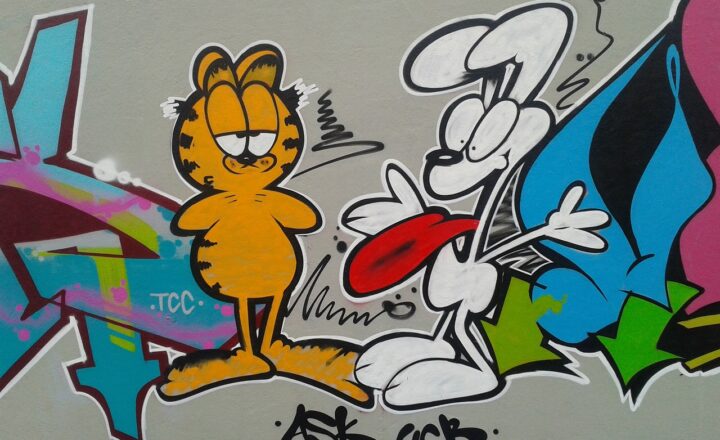Cartoons That Pushed Boundaries: A Look Back at Animation’s Most Provocative Moments
November 17, 2024

Animation has long served as a medium for storytelling that entertains and educates, but it also holds the power to challenge societal norms and provoke thought. While often associated with children’s entertainment, many cartoons throughout history have tackled controversial subjects, used satire to critique authority, and explored complex themes in ways that resonate with audiences of all ages. In this article, we take a closer look at animated shows and films that boldly pushed the envelope, sparking conversations and sometimes igniting controversies.
1. The Golden Age of Cartoons: Subtle Satire and Social Commentary
The Golden Age of Animation, typically defined as the period from the 1920s to the 1960s, was marked by innovation, creativity, and a willingness to tackle taboo topics. Cartoons like Looney Tunes and Popeye often featured social commentary masked in humor meant for children, yet they resonated deeply with adult viewers.
One classic example is the 1943 cartoon Coal Black and de Sebben Dwarfs, created by Bob Clampett. This cartoon, a parody of Disney’s Snow White, combined elements of African American culture with sharp satire, reflecting the racial tensions of its time. Although controversial for its use of stereotypes, it opened discussions about race and representation in animation.
2. The Counter-Culture Era: Cartoons Against the Grain
The 1960s and 70s ushered in a wave of counter-culture cartoons that challenged the status quo and questioned government and societal norms. One of the most significant was The Simpsons, which debuted in 1989 as a satirical take on the average American family. Not only did it offer a platform for irreverent humor, but it also tackled pressing social issues such as drug use, politics, and economic disparity. Through its subversive storytelling, The Simpsons paved the way for future animated shows that aimed to provoke thought rather than just entertain.
Another groundbreaking series from this time was The Ren & Stimpy Show, which broke the conventions of traditional animation with its crude humor and offbeat characters. This show challenged the perception of what children’s cartoons could be, embracing absurdity and controversial storytelling in ways that delighted some viewers while offending others.
3. Adult Animation: The Emergence of Edgier Themes
By the late 1990s and 2000s, the rise of adult animations like South Park provided a new tool for social commentary. Known for its shock value and willingness to address almost any topic, South Park tackled issues like religion, politics, and sexuality with a level of candor that few shows had dared to reach. A particular episode, Trapped in the Closet, famously critiqued the Church of Scientology, igniting significant backlash and demands for censorship.
These adult animations have proven that animated storytelling can transcend mere entertainment by catalyzing discussions about morality, ethics, and societal norms. The ability to create laughter while provoking thought exemplifies the unique role that animation plays in modern media.
4. Current Trends: Diversity and Representation in Animation
Today, animation stands at a crossroads where diversity and representation are increasingly important. Shows like Steven Universe and Avatar: The Last Airbender have garnered praise for their inclusive storylines and character development. These programs address gender identity, race, and cultural heritage in ways that encourage acceptance and empathy, further pushing the boundaries of animation.
For instance, She-Ra and the Princesses of Power, while rebooting a classic tale, introduced multiple LGBTQ+ characters, emphasizing the importance of visibility in children’s media. Such representations challenge the industry’s long-standing norms and open up a dialogue about what true inclusivity looks like.
5. Animation as Activism: The Use of Cartoons for Social Change
Animation isn’t just a form of entertainment; it has also been a potent tool for social change. Short animated films and web series have been employed effectively to address issues like climate change, mental health, and political injustice.
An example is the animated short film Earth to Luna which uses captivating visuals to educate children on environmental awareness. Furthermore, the popular web series, Last Week Tonight with John Oliver frequently utilizes animated segments to explain complex political topics, encouraging viewers to engage critically with the news.
By merging art with activism, animators pave the way for a new genre of storytelling that prioritizes educating and inspiring audiences to take action.
Conclusion: The Power of Animation to Influence Society
Cartoons have the profound ability to challenge perceptions and provoke discussions about society’s most pressing issues. Whether through humor, satire, or heartfelt narratives, animation has pushed boundaries and facilitated conversations that reach far beyond their screens. As we look back at these provocative moments in animation history, it’s clear that the medium continues to evolve, reflecting the complexities of contemporary life and providing a voice for those who seek to challenge the status quo. Through the animated lens, we witness the power of creativity in effecting change and fostering understanding within our diverse world.
As we move forward, the question remains: What boundaries will the next generation of animators break? Only time will tell, but one thing is for sure: Animation will continue to be a powerful medium for both entertainment and social commentary.






